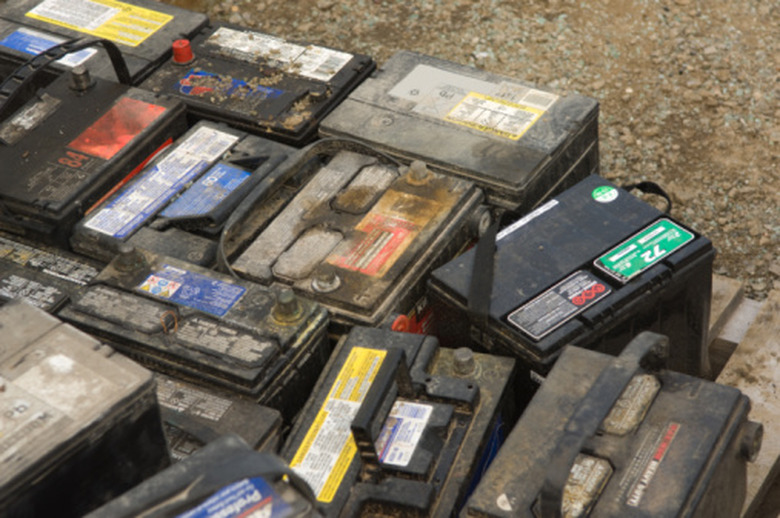How To Calculate How Long A Battery Will Last
Batteries list their reserve capacity, which describes the approximate time for which they can run without recharging, on the label or in the user's manual. This value, however, assumes specific conditions, including exactly 25 amperes of current at a voltage of 10.5 volts. If your circuit consumes more or less power than this theoretical circuit, you'll experience a shorter or longer battery life. To determine how long your battery will last, calculate the battery's total capacity and divide it by your circuit's power.
Step 1
Multiply the battery's reserve capacity by 60. With a reserve capacity, for instance, of 120: 120 x 60 = 7,200.
Step 2
Multiply the result by 262.5, the battery's rated wattage: 7,200 x 262.5 = 1,890,000. The battery contains 1.89 megajoules of energy.
Step 3
Divide the result by the voltage that the battery produces. If it produces, for instance, 12 volts: 1,890,000 / 12 = 157,500.
Step 4
Divide the result by the circuit's current. With a current, for instance, of 20 amps: 157,500 / 20 = 7,875. The circuit can run for 7,875 seconds.
Step 5
Divide the battery life, in seconds, by 3,600 to convert it to hours: 7,875 / 3,600 = 2.19 hours, or approximately 2 hours 10 minutes.
Cite This Article
MLA
Menezes, Ryan. "How To Calculate How Long A Battery Will Last" sciencing.com, https://www.sciencing.com/how-8167361-calculate-long-battery-last/. 7 August 2017.
APA
Menezes, Ryan. (2017, August 7). How To Calculate How Long A Battery Will Last. sciencing.com. Retrieved from https://www.sciencing.com/how-8167361-calculate-long-battery-last/
Chicago
Menezes, Ryan. How To Calculate How Long A Battery Will Last last modified March 24, 2022. https://www.sciencing.com/how-8167361-calculate-long-battery-last/
